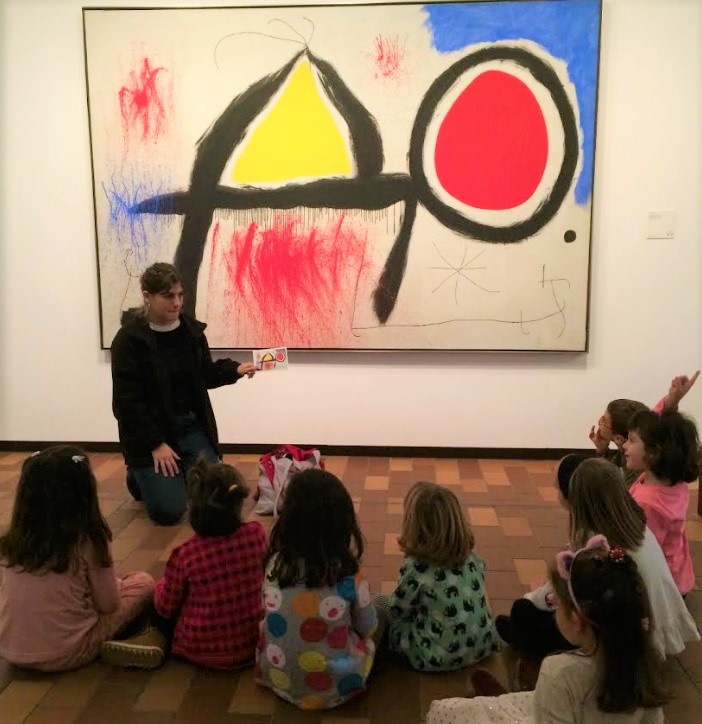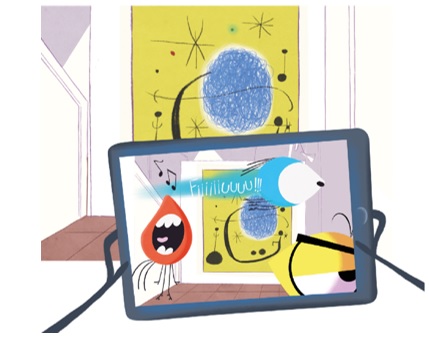Project Mironins will allow children to explore and discover Miró’s creative universe through augmented reality
Project Mironins will allow children to explore and discover Miró’s creative universe through augmented reality
The application will help girls and boys aged between 6 and 10 to explore the Joan Miró Foundation. UPF has led the process of creating the interactive script and defining the ethical protocols in research with minors. It also involves the participation of the Foundation itself, the production company Cornelius Films, and the firms WildBytes and Soft For You.

On 4 March, the first results were presented of Mironins, an R&D&I project that proposes “redesigning the cultural and learning experiences of visiting a museum through transmedia storytelling”. Mironins will allow girls and boys aged between 6 and 10 to explore, discover and be fascinated by the creative universe of Joan Miró through an augmented reality application that will guide them through the spaces of the Joan Miró Foundation. Through the application, the Mironins, characters taken from the artist’s paintings, will accompany the children in the adventure called Miró’s Magic Ladder.
Mironins is a project belonging to the RIS3CAT Media community, in which UPF participates. It is led by Eurecat, and involves a consortium comprising the production company Cornelius Films, the Joan Miró Foundation, and the firms WildBytes and Soft For You, which specialize in interactive and augmented reality applications.
The first phase of the project “has allowed developing the materials that will steer the following steps, such as the reports on technical and user requirements, the design of ethical protocols to follow in order to perform user tests with minors, and the general script of the experience”, explains Pere Freixa, professor at the UPF Department of Communication and project coordinator.
Through the application, the Mironins, characters taken from the artist’s paintings, accompany the children in the adventure called Miró’s Magic Ladder.
UPF has led two of these tasks (working packages - WP); the Script of the experience and experimentation variables for prototyping and the Protocol for focus groups with minors, which involved the other entities.
The creation of the Script of the experience has confirmed that interactive communication, and more specifically, the development of interactive scripts is a speciality that is still under development in terms of coding procedures and methodologies. This is made evident by the lack of standards and the multitude of procedures that are used simultaneously.
Since the project partners come from various fields of knowledge, in this WP we have worked collaboratively, based on the sum and complementarity of procedures and methodologies, in order to add knowledge and achieve a proprietary system that incorporates the contributions of all participants. This long process has been particularly valuable as the final script, The Mironins and Joan Miró’s magic ladder, combines the expertise of all of the partners of the consortium.
During the scriptwriting process, the first augmented reality tools were tested which have enabled previewing the effect the application will have once it is implemented.
The Design of protocols to develop user tests based on usability methods (UX) has been adapted to the requirements imposed by covid-19. The protocol developed was devised to be applied directly to the museum sector and to the use of interactive applications and emerging technologies for museum visits. To develop it, a series of documents was analysed, divided into four scenarios: (1) institutional regulations [national and European] concerning research with minors; (2) cultural studies related to methodologies and minors; (3) cultural studies on applications and emerging technologies applied to minors; (4) Catalan institutional regulations concerning covid-19 in museums and schools.
The next phase will involve the production of the first application protocols in order to initiate user tests that will allow confirming the effectiveness of the proposal. During the scriptwriting process, the first augmented reality tools were tested which have enabled previewing the effect the application will have once it is implemented. The image shows the Mironins characters on the screen of the mobile device accompanied by the work on display in one of the rooms of the Joan Miró Foundation.

Augmented reality will enable not only including the presence of the Mironins (avatars) but also facilitate the discovery of the worlds hidden around the works, as in the case of the Self Portrait of 1960, painted on top of an initial portrait, rendered in 1937. Thanks to the use of binaural sound techniques combined with augmented reality, the discovery will include generative sound elements.
